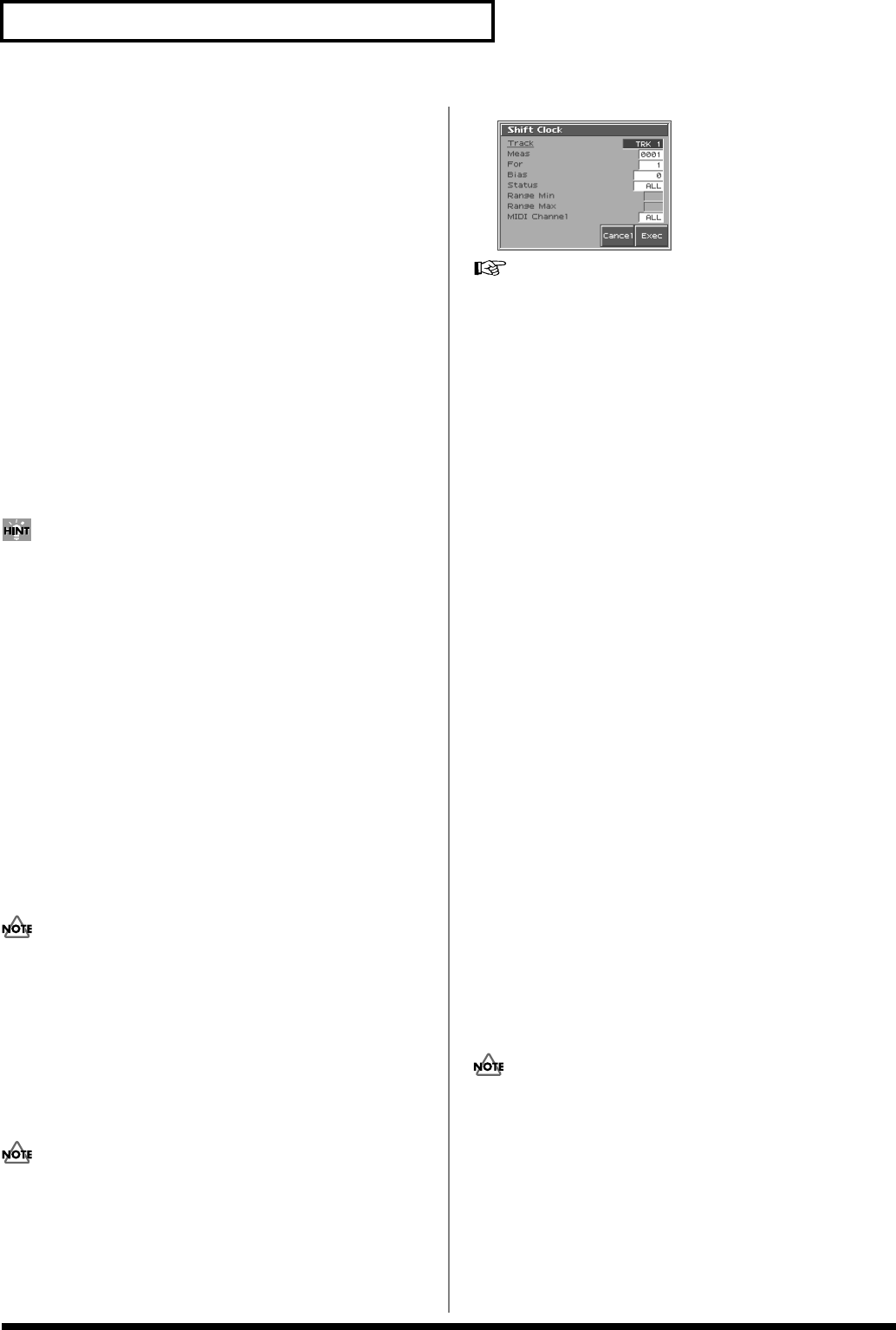
160
Editing Songs
Status
Selects the type of data to be extracted.
Value
ALL:
All types of sequencer data
NOTE:
Note
P.AFT:
Polyphonic Aftertouch
C.C:
Controller numbers
PROG:
Program numbers
C.AFT:
Channel Aftertouch
BEND:
Pitch Bend
EXC:
System Exclusive messages
Tune:
Tune Request
PTN:
Pattern Call Message data
Range Min, Range Max
If you set the Status parameter to “NOTE,” “P.AFT,” “C.C,” or “PROG,”
specify the range of data. Set “Range Min” to the lowest value of the
range, and “Range Max” to the highest value of the range.
• To extract all notes or polyphonic aftertouch data, set “Range
Min” to “C -1,” and “Range Max” to “G9.” To extract C4, set
“Range Min” and “Range Max” to “C4.” To extract C3 through
C4, set “Range Min” to “C3” and “Range Max” to “C4.”
• To extract all controller numbers, set “Range Min” to “0” and
“Range Max” to “127.” To extract all program numbers, set
“Range Min” to “1” and “Range Max” to “128.” To extract
number 4, set “Range Min” and “Range Max” to “4.” To extract
numbers 3 through 14, set “Range Min” to “3” and “Range Max”
to “14.”
MIDI Channel
Selects the MIDI channel(s) of the data to be extracted.
To extract all sequencer data, set this parameter to ALL. To extract
just the sequencer data of a specific MIDI channel, select that MIDI
channel.
Value:
ALL, 1–16
If you set the Status parameter to “EXC,” “TUNE” or “PTN,” the
Channel parameter will not be available.
Shifting Performance Data Forward
and Back (Shift Clock)
This function shifts the timing of sequencer data backward or
forward in time within a specified area in steps of 1 clock. Slight
shifts of timing can speed up or drag performance.
When this function is executed, data that would be moved to a
point before the beginning of the song will automatically shift to
the beginning of the song. If data would be moved to a point
past the end of the song, additional new measures will be
created automatically as needed. The time signature of the newly
created measures will be the same as that of the measure
immediately preceding.
fig.11-25_50
For details on the settings, refer to
“Basic Operation for Track
Editing”
(p. 151)
Track / Pattern (Source Track)
Specifies the track(s) or pattern whose sequencer data will be moved
in units of one clock.
Value
ALL:
Phrase tracks 1–16, the beat track, and the tempo track
TRK 1–TRK 16:
The specified phrase track
TEMPO:
Tempo clock
PTN001–PTN100:
The specified pattern
Measure, For (Edit Range)
Specifies the range of measures in which the sequencer data will be
moved in units of one clock. If you set “For” to “ALL,” all measures
will be specified.
Bias
Specify the amount (number of clocks) by which the sequencer data
will be moved.
Value:
-4800– +4800
Status
Selects the type of data to be shifted in time.
Value
ALL:
All types of sequencer data
NOTE:
Note
P.AFT:
Polyphonic Aftertouch
C.C:
Controller numbers
PROG:
Program numbers
C.AFT:
Channel Aftertouch
BEND:
Pitch Bend
EXC:
System Exclusive messages
Tune:
Tune Request
PTN:
Pattern Call Message data
If the Track parameter is set to “TEMPO,” the Status parameter
will not be available.
Range Min, Range Max
If you set the Status parameter to “NOTE,” “P.AFT,” “C.C,” or
“PROG,” specify the range of data. Set “Range Min” to the lowest
value of the range, and “Range Max” to the highest value of the
range.
Reference_e.book 160 ページ 2003年7月14日 月曜日 午後3時25分


















